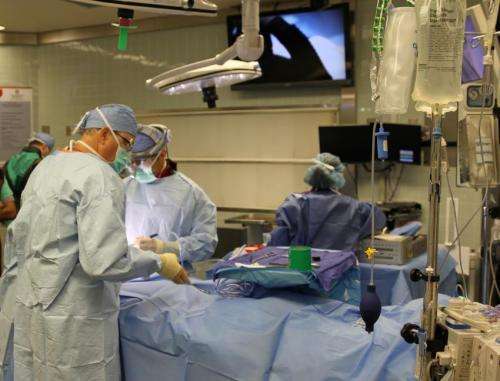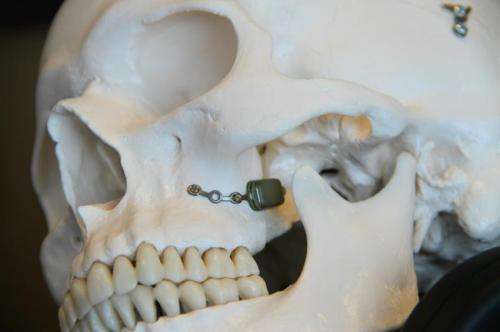First-of-a-kind surgery in US for severe headaches

For those suffering excruciating pain from cluster headaches, relief may soon be available from an investigational device being studied in a national multicenter clinical trial. Recently, doctors at The Ohio State University Wexner Medical Center performed the first surgery in the United States to insert a neurostimulator to provide relief from cluster headaches, which are more painful than migraines. "Cluster headache is one of the most severe and disabling chronic pain conditions known to humankind. That's why it's important to look at options to help these patients," said Dr. Ali Rezai, director of the Neuroscience program at Ohio State's Wexner Medical Center and one of the scientific developers of this technology.
During the outpatient surgery, sinus surgeon Dr. Bradley Otto and oral surgeon Dr. Peter Larsen inserted the device through a small incision in the patient's gum into the side of the face affected by cluster headaches. Autonomic Technologies Inc. developed the miniaturized, multichannel peripheral nerve stimulator, which is smaller than an almond, to stimulate the sphenopalatine ganglion (SPG). The SPG is a nerve bundle located behind the nose and is known to play a major role in severe headaches.
"Through an incision about 2 centimeters long, we're able to place this device, then pass it around the back of the maxillary sinus, or the cheek sinus, into this area where this ganglion is situated," said Larsen, who is professor of oral and maxillofacial surgery in the College of Dentistry at Ohio State. "The device is very small, and the patient doesn't even sense that it's there."
When patients begin to feel a cluster headache starting, they hold the rechargeable handheld remote controller to their cheek to activate the stimulator to block the pain signals. The patient's physician can program the device to give the appropriate length and strength of stimulation.

"This nerve control center sits behind the cheek sinus and is involved in the transmission pathway of cluster headache," said Otto, who is director of rhinology in the Department of Otolaryngology at Ohio State. "And so by blocking or shortcircuiting that involvement, we think it will help treat cluster headache. The beauty of the device is that there are no internal batteries or other structures that need to be routinely removed. So, once we make the incision in the mouth and we place this device back behind the cheek sinus, it can be left forever."
It's estimated that nearly 400,000 people in the United States suffer from cluster headache, which can happen many times each day, with each one lasting from 15 minutes to three hours. Cluster headache is often called "suicide headache" because the pain is so intense. Cluster headaches typically involve one side of the head, and are much more common in men. The headaches are so severe that they cause very disabling sharp and stabbing pain around and in the affected eye, along with pain in the nose, head and temple. Drooping eyelids, redness and tearing often accompany the eye pain, and there is no cure. "SPG interventions have been around for the past 100 years," said Rezai, including using anesthetics to block the SPG to surgical procedures to cut the SPG or chemically burning it. ""The main advantage of neurostimulation is that it's reversible and adjustable, and you're just modulating and blocking the pain signals."
In all, up to 120 patients with cluster headaches will receive the experimental device as part of the multicenter clinical trial that will last several years.


















